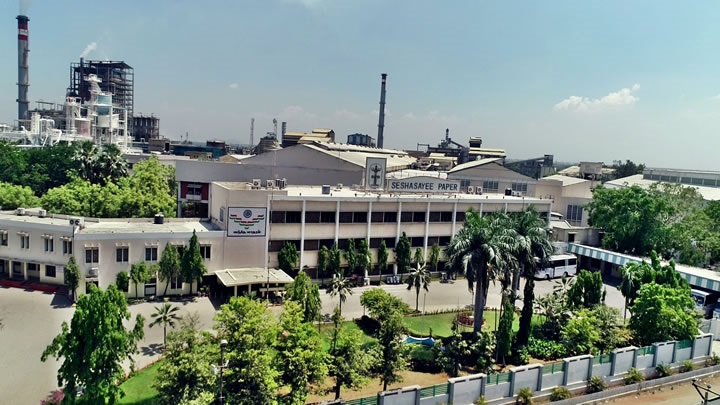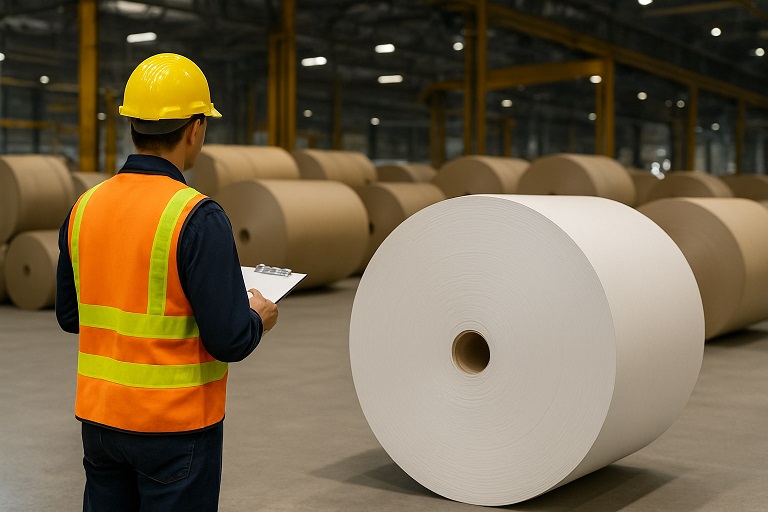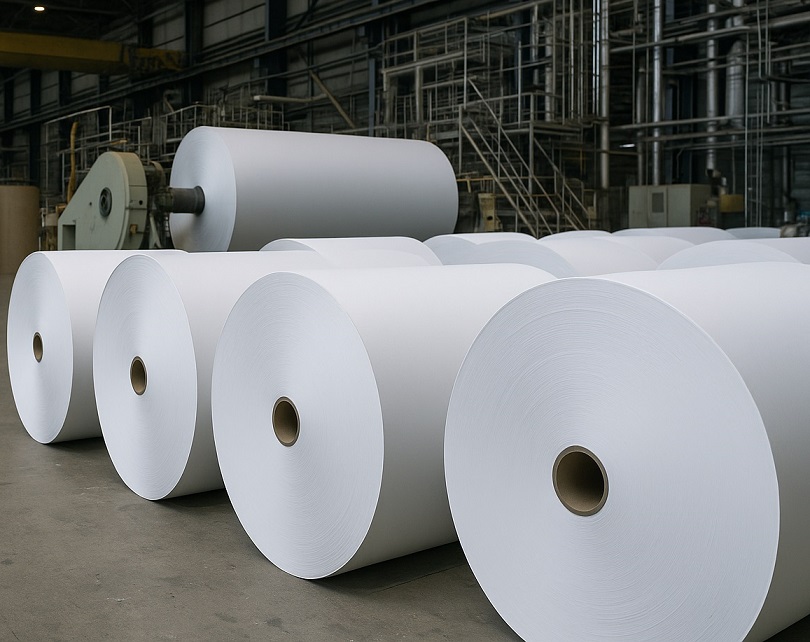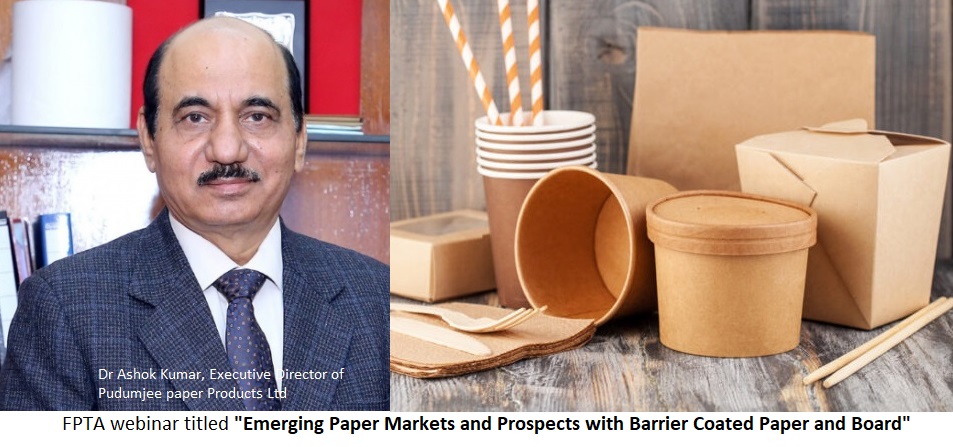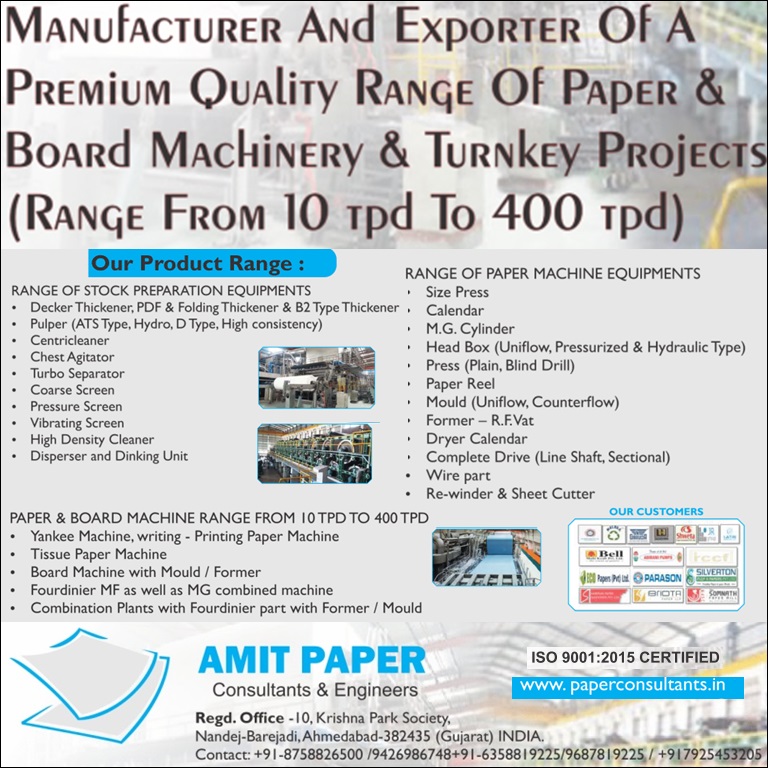India’s Paper Industry faces cost pressures; strategic product mix to improve margins, sees growth in Copier and Specialty segments
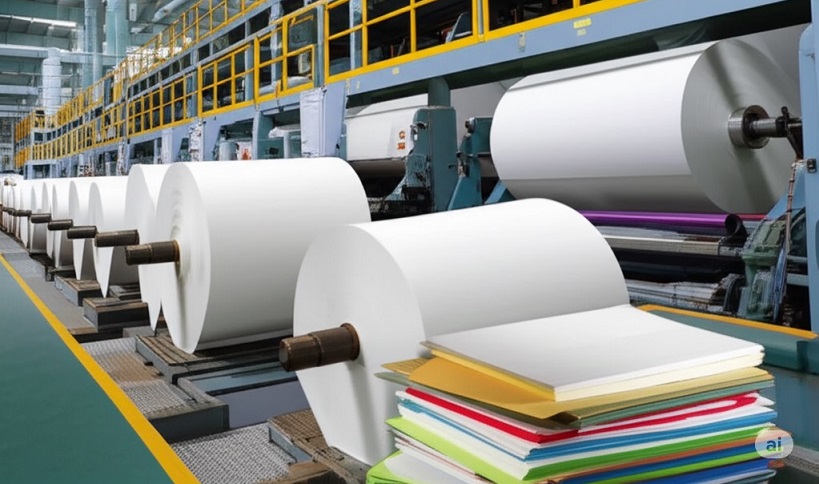
India’s Paper Industry faces cost pressures; strategic product mix to improve margins, sees growth in Copier and Specialty segments
-Strategic product mix is likely to improve revenue and profit margins in H2 FY25 and beyond
-Top A-grade mills in Q3 FY25 was primarily driven by rising pulp and raw material costs, expensive wood procurement, and increased competition from cheap imports.
- Another emerging vertical is the projected demand from the F&B industry.
The Pulp and Paper Times
The Writing & Printing Paper (WPP) and specialty paper markets are evolving due to sustainability trends, digitalization, and shifting consumer preferences. While the WPP segment remains stable with demand from education, government, and corporate sectors, challenges persist with rising raw material costs and cheap imports. However, the increasing adoption of eco-friendly, recycled, and agro-based paper is driving innovation. Meanwhile, the specialty paper market is expanding rapidly, particularly in packaging and food-grade papers, fuelled by e-commerce and regulatory shifts toward sustainability. Though cost pressures remain, product diversification and efficiency improvements present strong growth prospects.
In an exclusive interview with The Pulp and Paper Times, Mr. Pavan Khaitan, VC and MD of Kuantum Papers Limited, said, “The decline in revenue and net profit for top A-grade mills in Q3 FY25 was primarily driven by rising pulp and raw material costs, expensive wood procurement, and increased competition from cheap imports. However, the outlook for the coming quarters indicates a gradual recovery, backed by strategic cost optimizations, operational efficiencies, market growth opportunities, and diversification into high-margin specialty papers.
“Mills are actively focusing on process automation, captive energy generation, and sustainable raw material sourcing to mitigate cost pressures. The increasing demand for sustainable and value-added paper products, such as barrier-coated and food-grade packaging papers, is also expected to boost profitability,” Mr. Khaitan said.
Talking to The Pulp and Paper Times, Mr. Rahul Gupta – Co-founder and CEO of KNAM Marketing – said, “Domestically, the outlook for our sector is bullish, and we project that the market will continue to maintain a CAGR of about 25%–27%. Key reasons for this growth will be our continued dependence on digital platforms for all our personal needs. Several urban homes are now using quick commerce apps for urgent and impulse purchases.”
“On the export front, Indian paper exports have seen significant growth in recent years, and with shifting global trade dynamics, there is an opportunity to expand market share in regions like MENA. As a result, a combination of cost-efficiency measures, trade regulations, and a strategic product mix is likely to improve revenue and profit margins in H2 FY25 and beyond,” Mr. Khaitan said.
Mr. Jagdeep Hira — India Business Head, Pakka — added, “The Indian paper industry stands at the cusp of a transformative era. As global demand for sustainable and eco-friendly solutions continues to grow, the industry has an incredible opportunity to lead the way. We believe that innovation, collaboration, and a commitment to circular economy principles are essential for staying ahead. Investing in advanced technologies and leveraging renewable raw materials can ensure not only business growth but also environmental stewardship. Let’s work together to build a future where sustainable practices are at the heart of every product and process.”
Mr. Gupta further added, “Another emerging vertical is the projected demand from the F&B industry. Millennials are heavily dependent on ordering in, both at home and in offices. Even in bakeries, bread and other items such as cheese, patties, and sandwiches are wrapped in packing paper; we project that revenue generated from this customer base will be a major contributor. This is even applicable to food items sold on the streets.”
“Likewise for copier paper too, as the Indian economy is projected to grow at healthy rates, expansion of businesses will further push the consumption of copier paper from establishments. In this vertical, we see that increased demand will emerge from consulting, legal, and marketing sectors. This growth will not be limited to 3–4 months, but at least 3–4 fiscals and beyond,” Mr. Gupta said.
The trickle-down effect will be on the recycling of waste paper, which will be pushed back into domestic and international markets.
India’s paper industry, the fifth largest in the world with an estimated annual production of 22 million tonnes and employing over 20 lakh people directly and indirectly, is already grappling with escalating imports of paper and paperboard under preferential trade agreements. The influx — primarily from ASEAN countries and China — is undermining domestic manufacturing capacity, threatening jobs, and jeopardising existing and future investments.
“In the last four years, imports from China and ASEAN have more than doubled. Now, with the US and EU imposing restrictive tariffs and other trade remedial measures to protect their own markets, India is at risk of becoming a dumping ground for excess inventory from export-driven Asian economies,” said Pawan Agarwal, President, IPMA.
Web Title: India’s Paper Industry faces cost pressures; strategic product mix to improve margins, sees growth in Copier and Specialty segments





 Join WhatsApp Group
Join WhatsApp Group Join Telegram Channel
Join Telegram Channel Join YouTube Channel
Join YouTube Channel Join Job Channel (View | Submit Jobs)
Join Job Channel (View | Submit Jobs) Join Buy Sell Channel (Free to Submit)
Join Buy Sell Channel (Free to Submit) Paper News Headlines Channel (Free to read)
Paper News Headlines Channel (Free to read)







